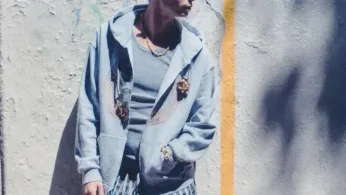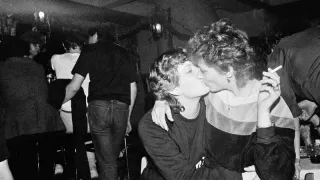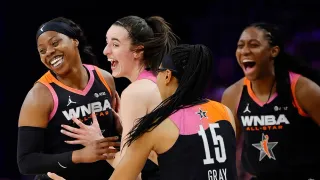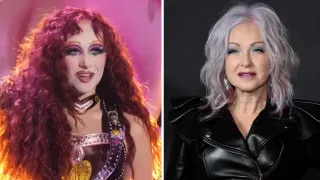
4 hours ago
Dauan Jacari: Movement, Masculinity, and the Rise of Queer Utopia in Fashion
READ TIME: 3 MIN.
Emerging from New York’s West Village, designer Dauan Jacari has rapidly captured the imagination of queer fashion insiders and creatives with his namesake label, Dauan Jacari. After years of quietly cultivating a distinct visual language rooted in Black queer culture and dance, Jacari’s debut show in 2024—held fittingly in an LGBTQ+ center—marked a turning point for both the designer and the broader conversation about what queer menswear can be.
Jacari’s background as a trained dancer deeply informs his design ethos. Drawing inspiration from icons like Alvin Ailey and the improvisational “Gaga” style, Jacari’s garments are not just clothes, but extensions of performance and movement. Pieces such as the spiral boxer skirt—a kilt-like creation made from underwear material—embody a playful irreverence and physicality, inviting wearers to move, pose, and occupy space in new ways.
This innovative approach is more than aesthetic; it’s a radical statement about queer embodiment. Jacari’s work deconstructs traditional codes of masculinity in fashion, offering a vision of clothing where Black queer men, and queer people of all backgrounds, can express themselves freely and joyfully. The debut “Paradise” show staged in 2024 was a utopian, communal celebration—attendees wore the Spiral Boxer Skirt in solidarity, transforming the space into a living artwork of queer kinship and pride.
Jacari’s aesthetic is marked by sharp wit and playful subversion. His campaigns often mimic the glamour and excess of 1990s billboards, emblazoned with cheeky slogans like “Clothes made for men with taste.” This humor is not just surface-level; it disrupts fashion’s sometimes exclusionary seriousness and invites the queer community to revel in self-celebration.
The designer’s signature pieces—scooped and scrunched jersey, halterneck dresses, and low-slung denim—blend athleticism, sensuality, and comfort. Jacari’s designs foreground the Black, queer, and femme body, challenging the limitations often imposed by mainstream fashion on who gets to be visible, stylish, and powerful. His refusal to conform to binary gender expressions or to sanitize queer sensuality for broader palatability is a defining element of his growing influence.
Jacari’s ascent comes at a moment when queer communities are demanding more authentic representation in fashion. Unlike many established labels, his work is rooted in lived experience—his studio is also his apartment, and his creative partner, Ryan Cardoso, is both collaborator and confidant. The label’s grassroots growth is mirrored in its community impact: the “Paradise” show felt less like a traditional runway and more like a gathering of chosen family, united by shared history and hope.
In interviews following the show, Jacari emphasized the importance of creating clothing for “the downtown dandy” and for those at the intersection of Blackness, queerness, and masculinity. Jacari’s designs reject the gaze of mainstream fashion, instead centering those often relegated to its margins. By staging his debut in a community space, he foregrounded queer joy and resilience, transforming fashion into an act of activism and affirmation.
Industry insiders and peers have taken note: Jacari’s spiral boxer skirt is now a cult favorite, worn by artists like Lil Wayne, Arca, and Shygirl, signaling its resonance far beyond the runway. The brand’s visual universe, built on humor, community, and unapologetic queerness, is now poised for expansion. Jacari and Cardoso have announced plans to move out of their shared studio/apartment and build a stronger, more sustainable team in 2025—a sign that the label’s reach and influence are only growing.
The designer’s rise is not an isolated incident but part of a larger wave of queer creatives reshaping the industry. Collectives and brands like Chromat , K.ngsly , and Luar have similarly foregrounded inclusive representation, but Jacari stands apart for his singular fusion of dance, Black queer heritage, and playful masculinity.
As Jacari looks to the future, his vision remains rooted in community and creative risk. “In 2025, we want to get a studio and build the strongest team in the world,” Jacari and Cardoso told Wallpaper magazine, underscoring their ambition to expand without sacrificing the intimacy and authenticity that define their work.
In a fashion landscape often dominated by established names and sanitized aesthetics, Dauan Jacari’s emergence signals the arrival of a new era—one in which queer designers create not just for the runway, but for the radical possibility of selfhood, community, and joy. His work offers a blueprint for fashion’s future: diverse, dynamic, and defiantly queer.






